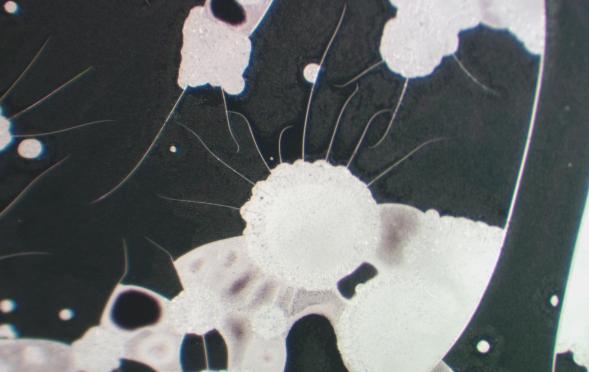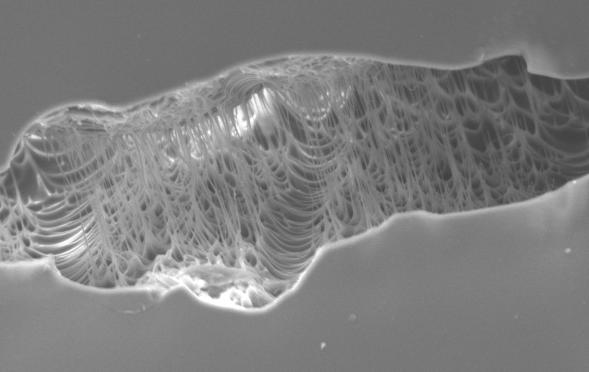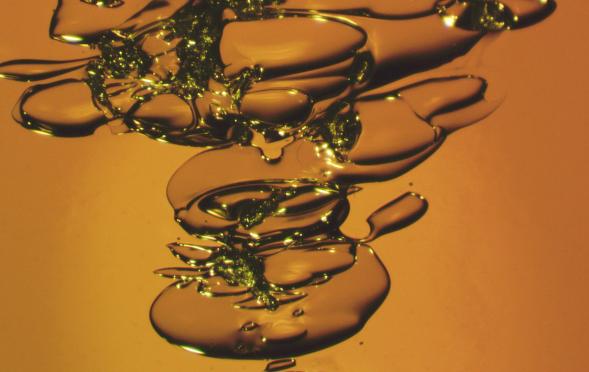Defect of the Month
Back to AGR's Library
Bottle formation takes place in an Individual Section (I.S.) machine, which has with many moving parts. Mechanical equipment requires lubrication, including mold dopes, grease, and oil. When one of these lubricants comes into contact with hot glass, it pyrolyzes and burns down into a black carbon crust. In this microscope image, a crust of pyrolyzed lubricant from the inside bottom of a bottle is shown, indicating that excess lubricant was introduced into this hot bottle during formation. Since pyrolyzing destroys the original molecular bonds of the material, the use of FT-IR or other chemically sensitive analysis techniques were prevented and specific lubricant components could not be identified.

In the Lord of the Rings movie, Frodo is led by the treacherous Gollum into the lair of a giant spider. Fleeing in terror, he is entangled in the massive webs and narrowly avoids being eaten alive. Although on a much smaller scale, this SEM micrograph of a flaw in a cosmetics container resembles the lair of an arachnid. The unusual flaw likely resulted from a fold in the glass being pulled apart during container formation, causing strands of glass to stretch across the fissure. Based on its appearance, the flaw would likely be classified as a tear or an infolded lap mark.

Metallic stones in glass are difficult, if not impossible, to identify by visual examination alone. Although metals such as iron and copper are the most common, reaction with the glass can create different sheens that alter the apparent color. On top of that, less common metals occasionally crop up, such as this nickel sulfide stone. Nickel sulfide is well-known in the flat glass industry as a cause of breakage for thermally tempered windows. This stone, however, was found in a glass bottle, and was caused by contamination of the internal cullet supply.

This microscopic image was taken at the edge of a larger inclusion in an amber glass bottle. If you look closely, numerous metallic spheres can be seen nestled within the trail of seeds (i.e. bubbles). Those spheres are composed of elemental silicon (Si), caused by chemical reaction of the glass melt with aluminum contaminants. The seeds are a byproduct of the reaction or due to the vaporization of other contaminants associated with the aluminum. Silicon balls create extremely high induced stresses in the glass, often leading to premature breakage of the host container.
Pagination
- Previous page
- Page 7
- Next page